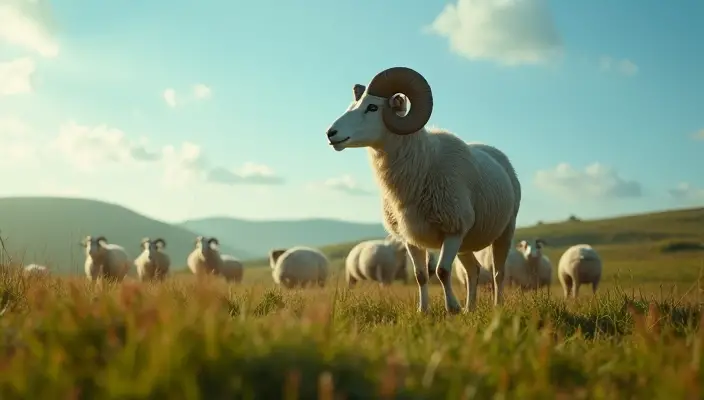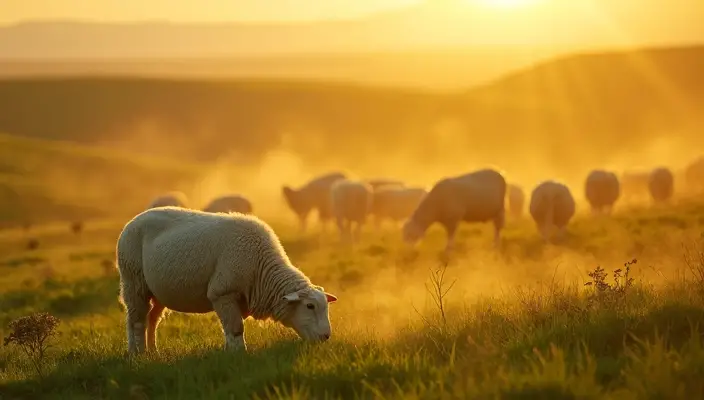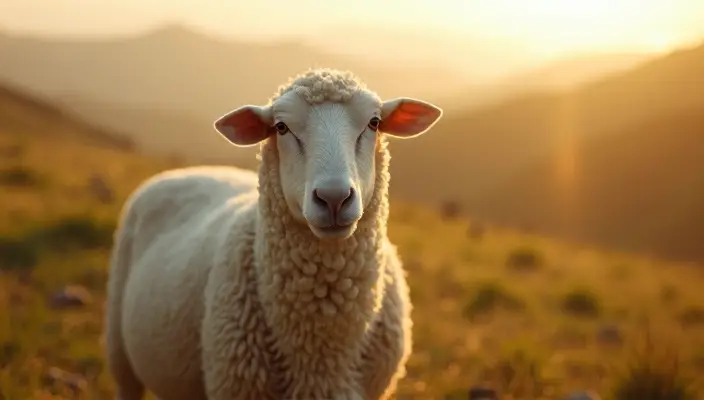If you’re as passionate about sheep farming as I am, then you know that not all sheep breeds are created equal—especially when it comes to wool production. One of the most famous breeds, the Merino, has a great history that spans centuries, continents, and many different climates. Known for its fine, luxurious wool, the Merino sheep has shaped the wool industry as we know it today. But how did this incredible breed come to dominate the wool markets of the world?
As a farmer who works with these sheep daily, I’m continually amazed by their journey, starting in Spain and spreading to places like Australia, the United States, and beyond. Let’s dive into the history of the Merino sheep, exploring how this breed evolved, its impact on global economies, and how its prized wool became the gold standard in the textile industry.
If you’re interested in more historical knowledge surrounding sheep or wool, check out the following posts.
Table of Contents
The Origins of Merino Sheep: Spain and the Moors (12th Century)
The story of Merino sheep begins in Spain, where the breed was developed during the 12th century. The name “Merino” is thought to have two possible origins. One theory is that it was named after the Marini, a Berber tribe from North Africa, while another theory links the name to a Castilian official, the “Merino,” who was responsible for overseeing sheep pastures.
The exact origins of the Merino breed are still debated, but it’s widely accepted that early Spanish shepherds began breeding sheep with finer wool, likely influenced by flocks brought over by the Moors during their rule in Spain. Some believe that the breed was developed through crossbreeding local Spanish sheep with those from North Africa and other regions.
Characteristics of Early Merino Sheep:
- Fine wool: Merino sheep were bred for their soft, crimped wool, which was vastly superior to the coarse wool of other breeds.
- Adaptability: Merinos thrived in Spain’s semi-arid climate and were well-suited to nomadic pasturing, a practice that involved moving flocks between highlands and lowlands depending on the season.
By the 15th century, Merino wool had become one of Spain’s most valuable exports, mostly because of its quality and softness. The Spanish Crown was so protective of its Merino sheep that exporting them was punishable by death. This was part of Spain’s effort to maintain a monopoly on the fine wool trade.
| Timeline | Event |
|---|---|
| 12th Century | Merino sheep begin to be developed in Spain. |
| 15th Century | Spain establishes a monopoly on Merino wool. |
| Late 18th Century | Merino sheep begin to spread to other countries. |
Merino Sheep and the Mesta: Spain’s Wool Monopoly (15th – 18th Century)
The Mesta, a powerful guild of Spanish sheep farmers, played a central role in the development and spread of Merino sheep. Founded in the 13th century, the Mesta controlled the movement of sheep across Spain, ensuring that they had access to the best pastures and that the breed continued to improve through selective breeding.
During this time, the Royal Escurial flocks were some of the most prized Merinos in Spain, known for their exceptionally fine wool. Merino wool became a symbol of luxury and wealth, sought after by nobility across Europe. Wool from these flocks was spun into fine garments worn by royalty and aristocrats, and Spain’s Merino sheep became famous for producing the finest wool in the world.
However, Spain’s hold on the Merino breed began to weaken in the 18th century. Political upheaval, wars, and economic challenges led to the slow spread of Merino sheep beyond Spain’s borders. Merinos were gifted to royal courts and wealthy landowners in other countries, where the breed began to take root.

Merino Sheep in Europe: The Breed Spreads (18th Century)
In the mid-18th century, the export ban on Merino sheep was lifted, and the breed began to spread to other parts of Europe. The first significant export occurred in 1765, when King Charles III of Spain sent a flock of Escurial Merinos to Saxony, Germany. This move sparked the development of a new type of Merino, known as the Saxon Merino, which would become famous for its incredibly fine wool.
From there, Merino sheep spread to France, Sweden, and Hungary. One of the most notable exports was to France, where the Rambouillet flock was established under King Louis XVI. The Rambouillet Merino is still one of the most important Merino strains today and has contributed significantly to the breed’s success in countries like Australia and the United States.
Merino Sheep in Australia: A Wool Industry Is Born (Late 18th Century)
One of the most significant moments in the history of Merino sheep occurred in 1797, when the breed was introduced to Australia. Captain Henry Waterhouse and Lieutenant William Kent brought 26 Merinos from South Africa to Port Jackson, marking the beginning of what would become Australia’s most important agricultural industry.
Initially, the Merino sheep struggled to adapt to the new environment. However, through careful breeding and management, Australian farmers were able to improve the hardiness of the breed. John Macarthur, often called the father of the Australian wool industry, played a critical role in this process. He began breeding Merinos on his farm, Elizabeth Farm, and within a few decades, Australia had become one of the world’s leading producers of fine wool.
| Key Figure | Contribution to Australian Wool Industry |
|---|---|
| John Macarthur | Established Merino breeding in Australia, developed fine wool production. |
By the mid-19th century, Australia had overtaken Germany and Spain as the world’s largest producer of Merino wool. The country’s vast open spaces and ideal climate allowed for large-scale sheep farming, and Merino wool became a cornerstone of the Australian economy. By the 1950s, Australia was producing more than half of the world’s Merino wool, leading to the phrase “Australia was riding on the sheep’s back”.
Merino Sheep in the United States: The Vermont Craze (19th Century)
Merino sheep also made their way to the United States in the early 19th century. Colonel David Humphreys, the U.S. Ambassador to Spain, was most important in importing Merinos to Vermont in 1802. His efforts resulted in something called “Merino Craze”, as farmers across New England began raising Merino sheep to meet the growing demand for fine wool.
At the height of the Merino Craze, Vermont had more than 1 million sheep, and the state became a major producer of wool for both domestic and international markets. However, the Merino boom was short-lived. By the 1830s, wool prices had dropped, and competition from Australia and Europe made it difficult for American farmers to compete. The Merino Craze eventually subsided, but the breed had already cemented its place in American agriculture.
Modern Merino Sheep: Global Expansion and Innovation
Today, the Merino is one of the most widely recognized sheep breeds in the world. Its wool is still considered the gold standard for fine fabrics, and the breed has spread to countries all over the globe, including South Africa, New Zealand, and South America.
In Australia and New Zealand, Merino wool remains a major agricultural export. Farmers continue to improve the breed through selective breeding, focusing on traits such as wool quality, hardiness, and disease resistance. Modern Merino sheep are capable of producing up to 10 times more wool than their Spanish ancestors, and their fleece is finer, softer, and more resilient than ever before.

The Impact of Merino Wool on Fashion and Sustainability
Merino wool is prized not only for its softness but also for its sustainability. Unlike synthetic fibers, wool is biodegradable, renewable, and naturally insulating, making it an eco-friendly choice for fashion designers and consumers alike. In recent years, Merino wool has been brought back in the fashion industry, with designers using it in everything from luxury garments to activewear.
The versatility of Merino wool makes it ideal for both warm and cold climates. It’s breathable, moisture-wicking, and odor-resistant, which is why it’s increasingly popular in the outdoor apparel market. Brands like Icebreaker and Smartwool have built entire product lines around Merino wool, showcasing its durability and performance in demanding conditions.
Conclusion: The Legacy of Merino Sheep
The history of Merino sheep is a testament to how a single breed can transform industries, economies, and even entire nations. From their Spanish origins to their status as global icons of wool production, Merinos have left a lasting legacy on agriculture, fashion, and sustainability.

